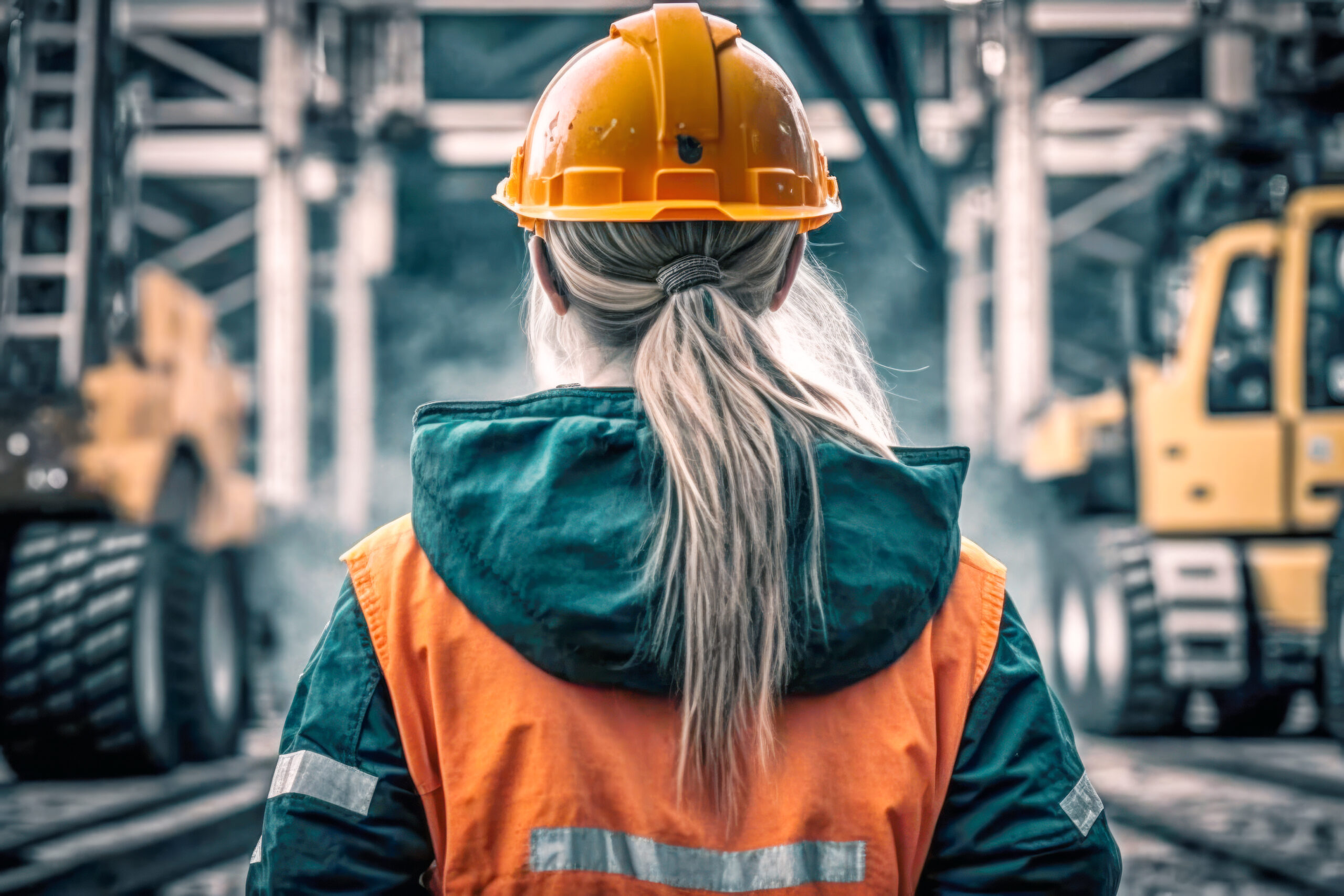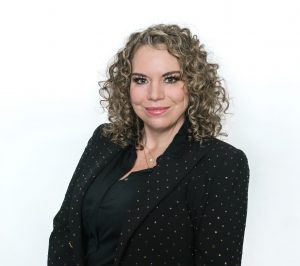
Ill-fitting PPE for women creates safety hazards, leaves workers feeling excluded: Panel
April 3, 2023
By
Todd Humber

A female worker wearing a protective helmet and safety gear on a construction site. Photo: EdNurg/Adobe Stock
There is one simple way to understand the issues facing women when it comes to finding properly fitting personal protective equipment (PPE), according to Lora McMillan, director of special projects at Ledcor Construction.
“I feel that maybe a lot of men haven’t tried on women’s clothing,” she said. “Not to knock it or judge it — and maybe there’s people that have — but I’d encourage you to go put on clothing that maybe doesn’t fit with the gender you identify.”
That’s something women have been doing for a long time in the workplace when it comes to PPE, said McMillan. In her industry, construction, only about four per cent of site roles are occupied by women, which means the issue hasn’t necessarily received the attention it deserved in the past.

Lora McMillan, Ledcor Construction
“That’s not a lot of people saying, ‘Hey, this is not fitting me.’ Sometimes, depending on the person, they may just feel ‘Okay, well, I can deal with this,’” she said. “Maybe we just need to be louder, a little bit more obvious about saying this does not fit me and these are the reasons why.”
McMillan was part of panel discussions during OHS Canada’s PPE for Women event, which attracted nearly 900 professionals from across the country. The first panel broke down and identified some of the problems with poorly designed and ill-fitting gear in the workplace.
Issues in policing
Nicole Wetsch, manager of the occupational health and safety section for the Edmonton Police Service, said nearly all the equipment officers use is designed for men.
The most important item — body armour — has been around since the 1970s, but it’s only in the last decade that manufacturers started developing body armour specifically for women.
“And that was geared towards the military,” said Wetsch. “What that translates to for our female members is a lot of ergonomic injury. It’s not uncommon to see consistent bruising that doesn’t go away for them… because they’re wearing it 12 hours a day.”

Nicole Wetsch, Edmonton Police Service
Women tend to have wider hips, but most body armour panels are cut in a rectangle shape.
“When they sit in their vehicle, that’s digging in to their hips,” she said.
Body armour can also be less effective for women because of their breasts, said Wetsch.
“If they happen to be someone with larger breasts, it creates a gap behind the panel,” she said, meaning it can be penetrated in some cases in a way that wouldn’t happen for men.
The shape of women’s bodies can also change, through things like childbirth and menopause, which also alters how equipment fits, said Wetsch. “We have to look at different replacement schedules for our female members.”
Issues in oil and gas
Karen Mosca, senior manager of operations at Pembina Pipeline Corporation, highlighted the issue of poorly fitting coveralls for women on job sites.
“The PPE, my coveralls, were hanging down to — I don’t know what better word to use — but the crotch is hanging down to my knees,” she said. “It just kind of restricts how you can move, and it is quite dangerous. Like, going upstairs, you can get caught on it.”

Karen Mosca, Pembina Pipeline Corporation
During her first site visit, she had to use electrical tape to wrap the coveralls around her ankles just so she wouldn’t trip.
“With our chest and hips, we tend to have to go larger men’s sizes. And by doing that, it just throws other parts of the coveralls off,” said Mosca. “You have to almost pick — so they’re either too loose or they’re too tight.”
Paula Campkin of Energy Safety Canada, who moderated the first panel discussion, noted that nearly any woman on a worksite could relate to the unique issues of cumbersome safety gear and using a washroom.
“A teeny, tiny porta potty and minus 30C and having to take off our coveralls, and it’s definitely a very uncomfortable thing to have to do,” said Campkin.
Campkin also fielded a comment from an attendee, and noted that women will often avoid going to the bathroom because of the hassle — which can lead to urinary tract infections — and have even more problems than usual when menstruating.
“It just leads to all kinds of questions, and the clothes that you’re wearing makes such a big impact to those types of issues,” said Campkin.

Paula Campkin, Energy Safety Canada.
The bathroom issues resonated with Mosca. “I’ve done that so many times, where I’m tying the arms around my waist just so they don’t touch the floor in the bathroom,” she said.
Fall protection was also an area of concern for her because the harnesses often don’t fit women properly.
“If you were to actually fall, you could injure your pelvic area because they’re loose (and) they’re trying their best to make it fit,” said Mosca. “The list goes on and on.”
Off the rack items
The panelists spent some time discussing the issues of off-the-rack items for visitors, and even for women who wear something slightly different on a certain day under their gear.
At the Edmonton Police Service, Wetsch said members are issued body armour personally — but they have stock equipment for people who are doing things like ride-a-longs with officers that doesn’t always fit properly.
Even something as minor as wearing a different bra can alter the fit of PPE for women, she said.
Mosca said they try and keep all shapes and sizes of PPE in stock, but some particular sizes — like smaller gloves — tend to run out quicker or don’t get restocked.
“When the ladies have to go in, they can’t find them,” she said. “It just becomes more of a hassle than it likely is for the more traditional sizes.”
Real-world implications
Mosca shared the story of what she called a “high potential near miss” that happened to a worker she knows at a different company.
The woman, a welder, was wearing big and baggy coveralls.
“One day, when she was buffing off welds, the grinder kicked back and the buffing wheel got caught up in her loose clothing,” she said. The wheel quickly wrapped tightly into the loose fabric.
“Luckily, it only knocked the wind out of her and she did not get seriously injured,” said Mosca. After that incident she opted for tighter, albeit more uncomfortable, overalls.
That choice, between selecting gear that is effective and gear that is comfortable and possible to work in, is the crux of the issue.
“The thing that makes me most uncomfortable with loose clothing is rotating equipment,” said Mosca. “If she was to get caught into that, it’s not going to let her go.”
Feeling included
McMillan said it’s not just the gear that needs to be addressed — but also the attitudes — to create an environment where all workers feel welcome and included.
Not having the right gear, or feeling like an afterthought in the workplace, can affect the way people do their jobs and how they feel they’re being perceived, she said.
“Almost everywhere you turn, say the washroom, say the personal protective equipment, (sends a message that) you’re kind of just not considered in the industry,” said McMillan. “I think that’s part of what keeps such a low representation of women.”
When you don’t see yourself reflected in the industry — or even nomenclature like “man hoist” and “manpower” — it’s tiny, constant reminders that you’re not a priority, she said.
“Everybody’s talking about the pink tax, and everybody’s talking about the increasing costs, but it’s not really about that, right?”
Instead, it should be viewed as “maybe a little bit of an extra cost for safety” that has the potential to improve the industry as a whole, said McMillan.
Visibility and leadership
Wetsch said visibility is critical for women, adding that eight or nine years ago all of the safety professionals at the Edmonton Police Service were men. As a result, the issues facing women weren’t being brought up.
“Over time, just with natural attrition, we’ve switched to a more female-centred team,” she said. “We’ve, in that timeframe, also had more females rise into leadership positions with the organization. And these conversations are happening a lot more and the people experiencing the issues feel a lot more comfortable bringing it forward, because they see that representation.”
Mosca noted that not every woman in your workplace will feel comfortable speaking up about the issue. When she started in the industry, and went out to job sites, she was more focused on keeping her head up and making sure she didn’t look intimidated.
Professionals in leadership positions need to be allies to young workers, and other women not comfortable speaking up, and be their voice.
“Then maybe, slowly, they’ll build their own voice,” she said. “And then they can do that for the next generation. So it’s just kind of organic change — like it’s happening — but it’s sometimes not happening quick enough.”
Watch the sessions on-demand
All of the sessions from the PPE for Women event are now available to watch on demand. Visit https://www.ohscanada.com/virtual-events/ppe-for-women/ to see the full agenda and watch the videos.